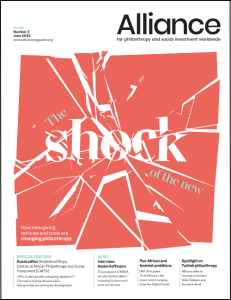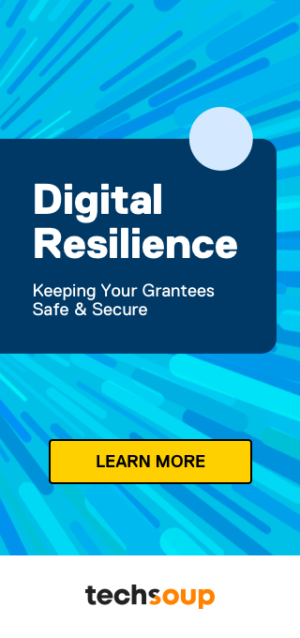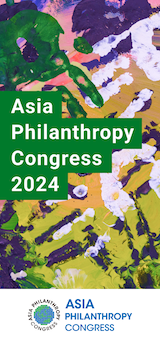Since the very first days of Purposeful, we have known that to build power with girls and their allies is to move resources directly to them. For what is a discussion of power without a discussion of money? Ultimately, to move money directly to girls is an act of solidarity and a political statement of intent, about how the world can and should be. It’s also a process of learning, deepening and embedding different world views and different ways of being into organisational practice. To adapt the phrase from Arundhati Roy, the money, when moved right – with love, care, and political intention – suddenly becomes a portal into another kind of existence.
Together we have been moving resources before we had a name, a bank account or formal registration. We have always seen the work of resource redistribution as a critical part of the feminist liberation project, and our own individual political responsibilities. The more we have moved towards girls in our practice, the more we are learning about what is possible as an organisation, as a hub for girls, and as infrastructure for girls’ movements. The lessons and insights from listening to girls and understanding their experiences of traditional girls’ programming has reinforced what we instinctively know – that so much about philanthropy and development aid is not working.
Girls are organising intergenerationally, as formally registered non-profit organisations and as informal groups, in small and large numbers. They organise in their villages and homes and are embedded in every movement for justice in every corner of the globe. They are working to push back against interlocking systems of violence in their homes, schools and communities, and within formal systems and structures, from local councils to the corridors of the UN.
Collectives are working on a range of thematic areas: from Early and Forced Marriage, to Migration and Displacement, Access to education, Disability rights, Gender Based Violence, Climate and Environmental Rights and Justice, Indigenous Rights, and FGM. But girls’ lives are not single-issue lives, and they rarely organise along narrow thematic lines. Girls work to imagine different futures for themselves and for all girls everywhere, through complex strategies building on lineages of freedom fighters, and drawing on new creative methods unique to this moment and this life stage.
Current funding practices do not match up to the depth and breadth, the complexity and the strategic clarity of the way girls organise. Time and time again, we hear folks in the field fall back on understandings of risk and reward that entrench – rather than transform – the status quo. While all of us in this sector must navigate the complexities of charitable registrations, many of the systems and structures we have put in place can be pushed and shifted and melded to better serve girls. Here we share some of the key practices that have evolved at Purposeful as we work to Resource Girl’s Resistance in the context of current compliance systems.
1. Grounding in the basics and pushing beyond a ‘that’s just how we do it’ mentality.
We know that we want to fund girls, who often lack access to laptops, the internet, power, bank accounts. There are huge infrastructure and access challenges. But we also know we can recreate a process that works based on what controls need to be in place. By going back to basics, we stopped focusing on the process as is, and started with the principles first. By centring on the ‘why’ we need certain controls in a process, we can unlock different ways of doing things that still meet those risk and compliance needs.
2. Operating as one programme and finance team – finding power-shifting mechanisms can actually help bolster financial controls
Finance people fear any potential for misuse of funds, so traditionally we are risk averse and create a control environment to minimise any opportunity for this. This is not a bad thing, as it’s a huge part of protecting organisations, stewarding resources responsibly, and making sure they’re financially sustainable. But the flip side is that this approach often, and unintentionally, results in stifling innovation and shutting out the girls we are meant to serve. In any participatory process where we are giving girls the power to decide where funding goes, it can feel scary to finance people to give up control. But so much of that fear is driven by inherited colonialist mindsets that are ground into us when we train as finance professionals – the requirement that at all times we should maintain professional scepticism, making us distrust those who are different to us. It means we start hoarding power in unhealthy ways without even realising it.
But if we trust our colleagues to find partners to make grants to, why wouldn’t we trust girl activists with lived experiences – the very people we want to support? To transfer the decision-making power to them requires finance colleagues to trust the activists, and our programme colleagues who are facilitating advisory panels making these decisions. But we can also take comfort that the panels are made up of a diverse range of girl activists spread throughout continents. Girls with lived experiences who are much better placed to understand what can work well than staff sitting in different continents, and help direct funds to where they would be most effective. There would have to be an incredibly sophisticated collusion attempt to divert funds away from grassroots girl-led groups by a panel where no single panellist has a deciding vote – groups are decided on by the average scores from individual scorers and through robust political debate.
3. Getting due diligence right and knowing your grantees
From a decision-making perspective, we feel there are solid control mechanisms in place. But what about the prospective grantees themselves? When funding larger partners, and something we see ourselves with our donors, is that there are often processes considering organisational capacity, big risk assessment documents to complete and submit electronically, years of audited financial statements and registration documents to submit for review amongst other things. It’s laughable to think that an unregistered girl-led grassroots organisation has the infrastructure or digital access to provide this, when they’ve had to phone in or use voice notes to apply for funding. So, a different approach is needed to reach them.
Again, the principle is going back to the ‘why’. Understanding what the risks are that we’re concerned about, and what do we need to obtain to mitigate these risks. We decided that groups being registered or unregistered isn’t a huge risk to us, so long as there remain accountability mechanisms in place for funding. In terms of understanding organisational capacity, we also found honing in on 5 questions from 2-3 references, spanning feminist mission, financial, safeguarding and programme information/risks is sufficient for our risk appetite. Most of our grants are $5,000, so we do not want to enforce a process that becomes uneconomical for grantees in terms of time and cost.
4. Finding the right mechanism, and setting up systems to cope with them
Meeting girls where they are is complex. Unregistered groups often don’t have bank accounts, but there are regulated money transfer options available that they can use – modalities like Western Union and PayPal are part of the regulated banking system, even if they are not high street banks. They all contain audit trails that we can reconcile to our finance systems to ensure that these additional ways of moving money do not open the organisation up to internal risks of fraud. In some countries, there are mobile money options, and of course in Sierra Leone we have a totally offline approach in hand delivering cash if we need to.
But of course, each of these different ways of moving money involves a slightly different process. What remains consistent across them all, is validating the details of where to send funds to, ensuring this is a regulated method of moving money, and the principle of having receipt confirmations by the group so that we know the funds went where they were intended, and were not co-opted by one member of the group.
There are, of course, some countries where it is harder to send funds to than others. Local legislative frameworks or regulations can present different barriers and challenges. The key is being flexible to allow for process changes, without increasing risk exposure. Hold the ‘why’ principle behind the process as a guiding star every time a barrier is reached, to help find routes through it in a way that makes sense for the group and the institution.
5. Reframing reporting
It goes without saying that once we’ve moved money, we want to know where it lands. This goes beyond financial compliance to organisational learning and seeing it as such can offer a different dynamic and quality of response. We know that girls are unlikely to have access to software like Microsoft Excel. Some of them might not even be able to write or things can get lost in written translation. So instead, we focus on listening and group learning.
Recording learning calls or in person sessions where girls can come together to talk about what they’ve done with their grant allows us to understand their work on a deeper level. It helps us document their journeys, which are part of our own, and it helps us to understand the limitations of the amounts we give and how far it can go. And by doing this in a group setting of other grantees, there is peer accountability and problem solving as girls share their experiences. They feel safe to expand on what they’re doing and why, rather than feeling pressure to say what they perceive we want to hear. They feel safe to say when they haven’t spent their funds, or what their challenges are / have been, or how they’d like to change their plans. And having that honest verbal reporting, allows us to be sure that funds are being spent appropriately – we’ve found this a far more effective method from a learning perspective, but also a compliance perspective too.
Moving money in practice
We’ve had some great successes refining this approach in our Global Resilience Fund and With and For Girls Fund, where we’ve disbursed over $2.8m through 431 grants to groups in 101 countries since March 2020.
Using different application methods (voice notes, WhatsApp, phone calls, online forms) we pooled applications into one format and convened online regional panels. We supported them with stipends, interpreters and data requirements and panellists then scored and selected where funding should be attributed. Average scores were taken, and panellists were unable to score any groups that they might be a part of or are affiliated with.
We moved to the due diligence stage, and some groups didn’t meet our requirements, proving that we are detecting risky groups in our process before we’re moving the money. And then we redesigned two-page grant agreements that were easy to explain to groups and allowed for flexible funding, but continued to place restrictions on illegal or unwanted activities. We redesigned fiscal sponsorship agreements, co-signed payment instruction and receipt agreements where necessary, and logged receipts that came to the team in different formats in one central space in our systems. In short, we made it our labour to establish different process flows, and not our grantees’.
And then came the actual payment mechanisms. We may have integrated new payment platforms to reach grantees, but we didn’t change our authorisation methods or segregation of duties in any other part of the process. It has meant a bit more work to reconcile additional payment platforms, and fees are proportionally higher when we’re making smaller grants, but the process is essentially the same as any other payments we make.
And yet we still find that this is a work in progress and there are things we need to work on. As amazing as digital solutions have been with our global grantmaking, particularly in times of Covid-19 enforced restrictions on movement, they do not work everywhere and there is no one size fits all solution.
In Sierra Leone, we have done incredible things by getting mobile phones into the hands of over 700 girls and hearing directly from them. We had great ambitions that this would also open up mobile money as a digital mechanism to get money to girls in a much more efficient way. Using an Orange Money system installed in our office, we could log phone numbers, send payments to girls and see who had received them / cashed out, and easily reconcile this to our bank account and finance systems. It meant having online reports on hand at any time, without even leaving our office chairs. We hoped that potential time and cost savings in this solution, instead of local partner hand-delivered cash, would be transformational.
And yet reality proved a different picture in some districts. What we learned was that there remain operational challenges with financial implications that don’t just disappear with a streamlined digital approach. Some of the challenges included:
- A proportion of phones being co-opted by family members and friends, potentially diverting mentor financial assets away from them
- Damaged or broken phones aren’t always reported quickly, particularly if there is less in person support, meaning that funds can be sent to girls but cannot be accessed by them
- Some mentors are in communities that are quite a distance from cash out kiosks, making it an uneconomical journey to cash out their stipends
- In some cases, the electronic transfer system just didn’t work. Some reports showed funds had been sent but other reports showed they hadn’t been received by mentors.
These challenges raise issues on a number of levels, with the first being a critical risk from a financial compliance perspective. As a registered charity, we are legal custodians of charity assets (including cash), and therefore have a duty to ensure funds are being received by the intended recipients, in this case mentors. Anything else is a misuse of funds. Whilst it hasn’t happened in the vast majority of cases, there have been a handful of incidents that we’ve had to deal with (less than $250 worth). Instead of preventing us to continue to trust mentors, instead we take comfort that our controls work in detecting these occurrences, including feedback from other mentors.
Then there are the operational, or more programmatic risks. If girls can’t access their stipends, do they continue to participate in the programme? What does this do to trust in the various stakeholder relationships? Does it undermine all of the work that we, local partners and community members have done up until this point? Lots of questions that we are still learning the answers to. And on top of that still, is the knowledge that if it is this hard to reach these girls in a country where we have a deep presence, there remain greater barriers and challenges where we do not have such a deep-rooted presence.
And perhaps the biggest thing to name is that we’ve been able to pilot, to learn, to pivot, to learn, to pivot, to pilot again and again each time refining as we go because we have had a level of unrestricted resources to do this work. To navigate challenges we don’t even know exist yet takes brain power and time, and a willingness to try. None of that is possible if we are constrained by resources that don’t provide that flexibility, or don’t give us the ability to take risks, to fail, to learn, to innovate and then hopefully succeed. We are immensely grateful that we have incredible fundraisers at Purposeful, and a board of trustees that trust management proposals, because they know that we are truly grounded in the belief that girls are worth taking risks for.
Read more in the Purposeful publication launching this week: Resourcing Girls’ Resistance: Celebrating 5 Years of Moving Money to the Margins.
Annemarieke Murthi is Director of Finance and Operations, and Rosa Bransky is Co-CEO and Co-Founder of Purposeful, a feminist hub for girls’ organising and activism, rooted in Africa and working all around the world.
Upcoming issue: New giving vehicles and tools
 New giving vehicles and tools have proliferated in recent years with the conventional foundation model supplemented by donor advised funds, limited liability companies and personalised giving services. At the same time, technology is providing more direct means of fundraising and bringing in new people as donors. What are the implications of these changes? Is the conventional foundation model at risk of being supplanted? And are new means of individual giving producing greater democracy? This special feature explores the implications for institutional philanthropy.
New giving vehicles and tools have proliferated in recent years with the conventional foundation model supplemented by donor advised funds, limited liability companies and personalised giving services. At the same time, technology is providing more direct means of fundraising and bringing in new people as donors. What are the implications of these changes? Is the conventional foundation model at risk of being supplanted? And are new means of individual giving producing greater democracy? This special feature explores the implications for institutional philanthropy.
Subscribe today so you don’t miss it! Or you can pre-order the single issue here with a 20% discount.







Comments (0)